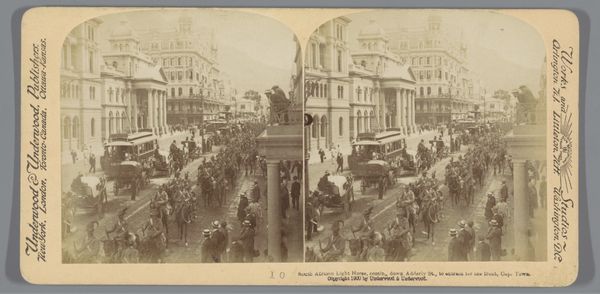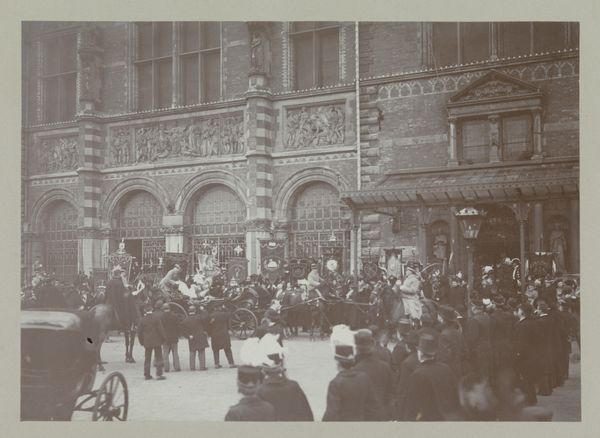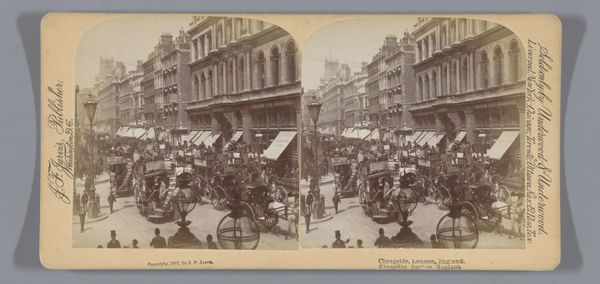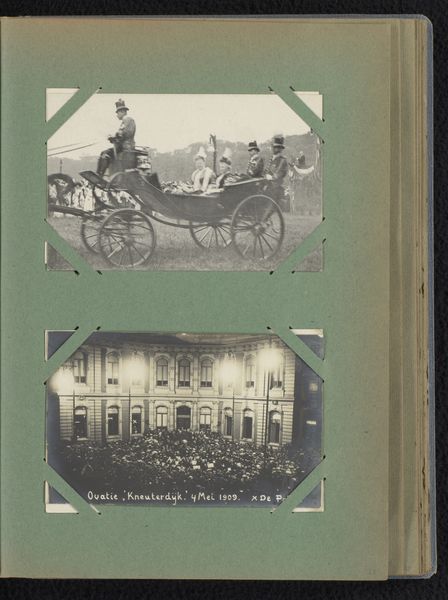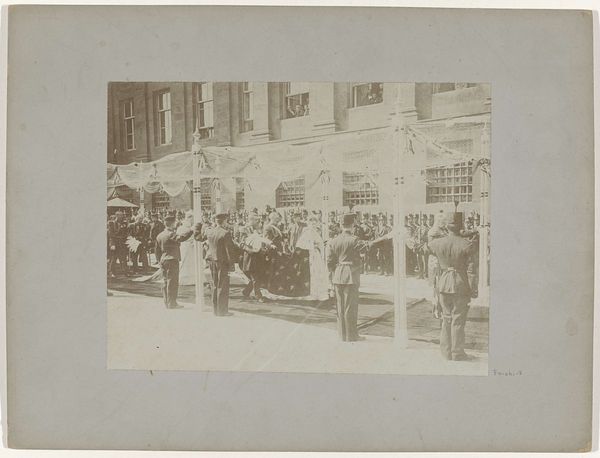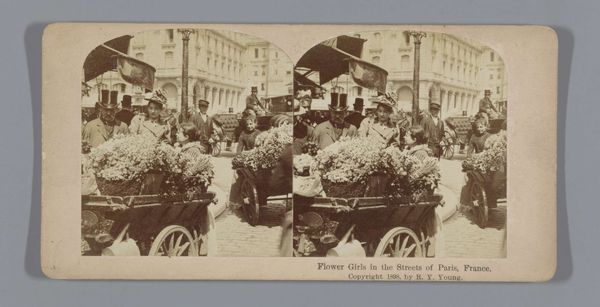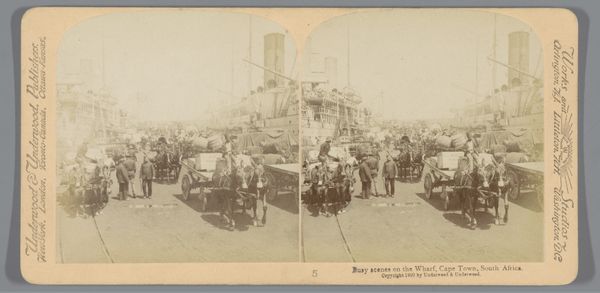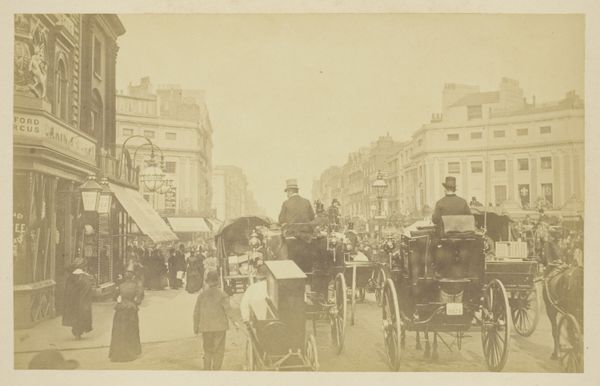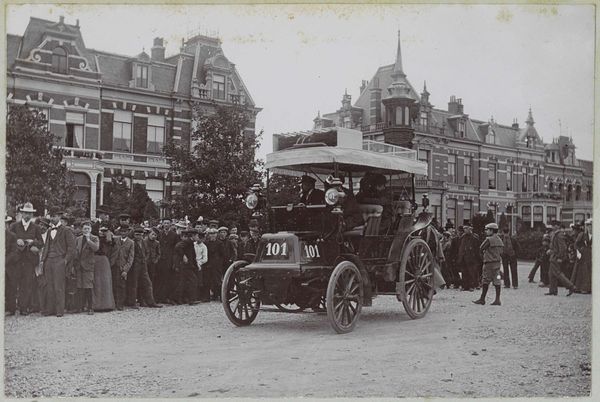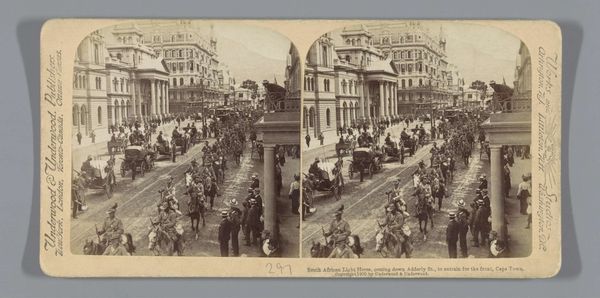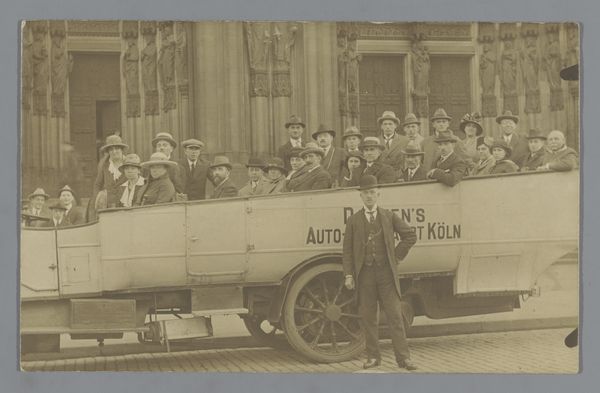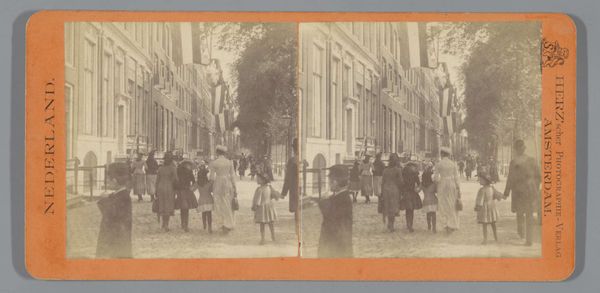
photography, gelatin-silver-print
#
landscape
#
photography
#
gelatin-silver-print
#
cityscape
#
realism
Dimensions: height 88 mm, width 178 mm
Copyright: Rijks Museum: Open Domain
Curator: The image before us is a gelatin silver print titled "Gezicht op het Kerkplein in Pretoria met op de voorgrond Boeren met karren," which roughly translates to "View of Church Square in Pretoria with Boers and wagons in the foreground." It was created in 1901. My first impression is one of subdued energy – there’s a crowd, activity, but it's all rendered in this faded, almost dreamlike sepia tone. Editor: I'm immediately struck by the layering of symbols present here. Look at how the architectural language of the building behind them asserts power while the wagons themselves speak to movement, and labour. Consider the fraught context of the Second Boer War; This is clearly a statement about the social hierarchy. Curator: Precisely. The very act of documenting this scene normalizes the social dynamic that disenfranchised so many, which would have been an attempt by some photographers to assert and codify cultural norms. Editor: We also can’t ignore the use of the wagon—as it transports, facilitates expansion, often westward across lands occupied by indigenous populations. It also speaks to themes of identity, because the "Boers" present are descended from Dutch settlers with a distinct cultural identity shaped through colonialism, anti-British sentiment and conflict with native populations. The square as the central point is where they meet. Curator: It's easy to forget the inherent politics in photographs, particularly from this era. Think of what’s deliberately framed versus what’s excluded, because the visual choices actively endorse certain points of view regarding identity. Editor: And it brings up questions regarding power dynamics within South African society, as the building, and that society at the time was deeply fractured. Curator: A sobering yet important reflection for today. Considering not only the visual components but the politics that underpins everything being presented within the image itself, its place, its architecture and who populates them, and, perhaps more importantly, why. Editor: Absolutely. It invites us to think critically not only about who we are as South Africans but to ask questions as to how we interact with images, whose stories are validated or dismissed when such work are viewed uncritically.
Comments
No comments
Be the first to comment and join the conversation on the ultimate creative platform.
